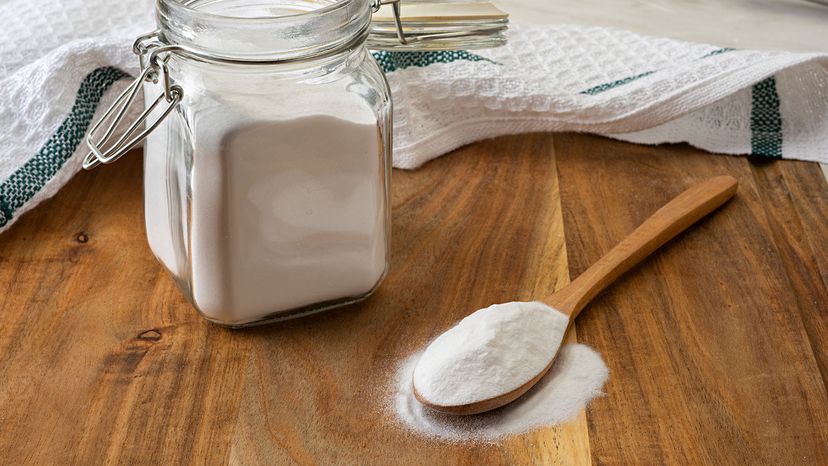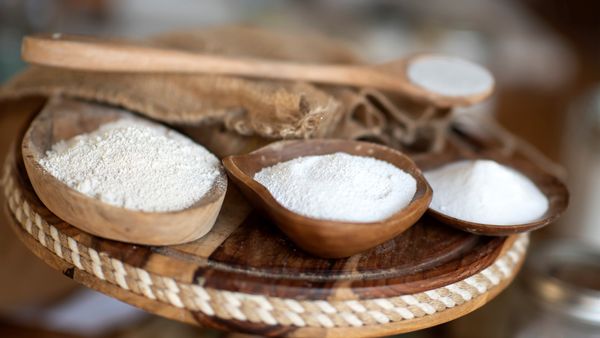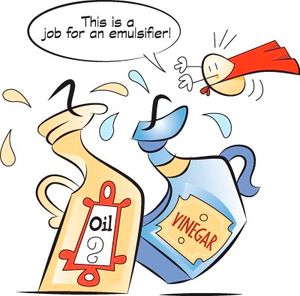Clearly, baking soda's got it going on. Check out this helpful list of surprising uses for good old sodium bicarbonate (aka baking soda), the inexpensive but effective superhero of the salt family!
Neutralize Cat Odors
It isn't Fluffy's fault that her cat box is stinky. That's literally the nature of the business! To avoid unpleasant smells and add a little time between litter box changes, try sprinkling baking soda inside the litter box.
This little trick works wonders on eliminating bad odours and should make it less obvious to the average nose that there's a feline friend in the house.
Test Soil Acidity
Many gardeners like to test the pH level of their soil to make sure it's not too acidic. Most plants require an alkaline pH level of 6.0 to 7.5 to do well. To test your soil's acidity get 1 cup of soil from your garden.
Next, divide into two containers. Add a half-cup of vinegar to one of the containers. If it fizzes, it's probably nice and alkaline. If it doesn't, however, put a 1/2 cup of baking soda and some distilled water into the other container. If it fizzes, it is acidic. If no reaction, the pH is just right!
Soak Up Oil
When oil winds up on the deck, whether from the grill or spilled sunscreen, you can just sprinkle baking soda on top. It will soak the stains right up! You can also use it on oil and grease stains in the driveway.
Once the baking soda's is in the targeted area, use a stiff-bristled brush to work it into the stain in a circular motion. Then rinse away with hot water.
Treat Bug Bites and Stings
Many campers keep a box of baking soda on hand because it's great for treating bug bites and stings. Make a baking soda paste with a little warm water, then apply to the affected area several times a day until the sting goes away.
De-Skunk a Pet
Skunk run-ins happen to pets who hang out outdoors. Treat the super smelly situation by creating a baking soda bath. Start by wetting your dog with water and then dousing it with a bath of 3 percent hydrogen peroxide (1 quart's worth), 1/4 cup of baking soda and 1 teaspoon of liquid soap.
This is enough to treat a dog of medium size (30 to 50 pounds), so adjust accordingly. Work this baking soda solution through the dog's fur thoroughly. Leave it for five minutes. Then, rinse and dry.
Maintain Aquarium pH Level
If the pH in your fish tank is off all you need is to mix baking soda, approximately 1 tablespoon with 1 cup of dechlorinated water. Add gradually (1 teaspoon for every 5 gallons) over several hours until the correct pH level is achieved. Ideally, remove fish before doing this.
Clean Laundry Better
Amp up your laundry detergent's cleaning power by adding a 1/2 cup of baking soda to the rinse cycle. Not only does it make laundry smell fresher, it softens towels.
It also works wonders on sweat stains. Get rid of them by making a baking soda paste with some water, then rub it into the stain. Allow to soak, then wash normally.
Get Ink Out of Leather
Leather goods are way too pricy to be felled by a plain old ballpoint pen. If an errant marking occurs, mix a paste of baking soda and water. Using a cotton ball or damp sponge, gently apply the paste to the stain. Repeat as needed until the ink disappears.
Absorb Oil in Your Hair
If your hair is greasy and you're fresh out of dry shampoo, turn to baking soda! In a pinch, add a few drops of the good stuff on your hair to absorb excess oil. Use a wet brush to comb through it and then blast with a hair dryer. Don't do it too often, though, as there is evidence that too much baking soda is too harsh for frequent use on hair.
Use as an Antacid
All out of Pepcid? You could try drinking baking soda. No really! Put a teaspoon of baking soda in an 8-ounce glass of water and dissolve. Drink it up and enjoy relief from painful indigestion and heartburn. You can even add a little lemon juice to make it more flavorful.
People who deal with severe reflux should probably steer clear of this method, however, since it can open up the esophagus a little too much.
Exfoliate Your Face
Make a paste using 2 teaspoons of baking soda and 1 teaspoon of water. Apply to the face and gently rub in circles with your fingers (stay away from the eyes). Rinse, pat dry with a clean cloth and follow up with moisturizer.
Support Good Oral Health
Cancer patients are instructed to rinse their mouths daily with a solution of water, baking soda and salt to prevent sores, but it helps anyone maintain good oral hygiene. Added bonus: It freshens breath!
Another helpful use is to clean retainers and mouthguards. Breathe new, hopefully fresher, life into your old retainer or night guard with a baking soda paste. Make a paste that's half and half baking soda and water (make sure it's thick enough to stick). Scrub carefully with a toothbrush, then rinse clean.
Prevent Smelly Feet
If stinky feet are your Achilles heel, so to speak, sprinkle some baking soda into clean socks before putting them on. This will keep sweat and smell under control.















